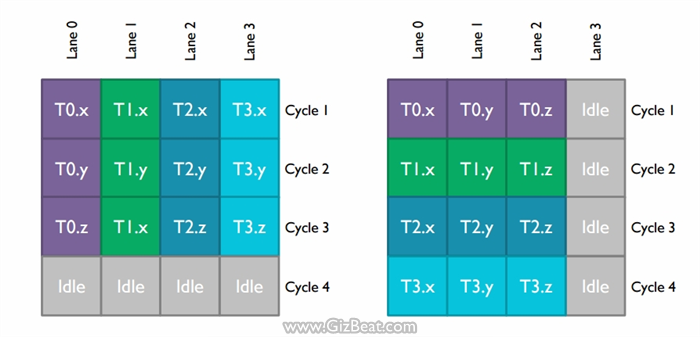MediaTek recently announced what was supposed to be their MTK P30 SoC. However, in light of Qualcomm’s recent release of Qualcomm’s excellent Snapdragon 625 which scores a hefty 60k+ on Antutu and is available in mobiles costing as little as $160, and Qualcomm’s soon to be Snapdragon 635 which will be taking the game even further, MTK may be scrapping Helio P30 and replacing it with Helio P35.

Helio P35
As with the upcoming MediaTek MTK Helio X30 and Helio X35 the Helio P35 will use an incredible 10nm process.
Helio P35 will employ ARM Cortex-A73 for the heavy lifting, ARM Cortex-A53 for the middle load processes, and ARM Cortex-A35 for the light load background processes.
The Cortex-A73 cluster CPUs will be clocked at 2.2GHz, the Cortex-A53 at 2.0GHz, and the Cortex-A35 at 1.8GHz.

Helio P35 GPU. What is Bifrost?
The GPU in the Helio P35 will be ARM Mali-G71MP3. Mali-G71 carries ARM’s Bifrost architecture technology.
Bifrost is ARM’s latest and greatest GPU architecture. It’s a major rebuild and promises big improvements over the previous generation, Midgard, which was employed in GPUs such as Mali-T880 and Mali-T760.
According to ARM, Bifrost should be 20% more efficient and a 40% improvement in performance per square millimeter than Midgard.

In comparison to Midgard which supports up to 16 shader cores, Bifrost can carry up to 32 which theoretically doubles GPU performance. ARM Mali-G71 also supports up to 120Hz refresh rates which is a big plus for Virtual Reality applications.
G71 can push up to 4K resolution displays and has hardware support for 4x anti-aliasing, and optimizations made to Bifrost have been made to better support Vulkan and other standard APIs such as OpenGL.

The Bifrost architecture gives up to 1.5x the performance of the previous generation, Midgard. And, tiler technology has been redesigned to reduce tiler memory usage.
Full GPU coherency
While most SoC have the GPU as a slave unit to the CPU, the Bifrost architecture allows for the GPU to become a full partner, giving it full access to the same cached data as the CPU which reduces the incidence of accessing main memory for data.

In addition, CoreLink CCI-550 on the Mali-G71 allows for the CPU and GPU to share the same memory, which keeps them from having to copy data between CPU and GPU buffers.
Bifrost Quad Vectorization
- Bifrost uses quad-parallel execution
- Four scalar threads executed in lockstep in a “quad”
- One quad at a time executes in each pipeline stage
- Each thread fills one 32-bit lane of the hardware
- 4 threads doing a vec3 FP32 add takes 3 cycles

Improves utilization
- Quad vectorization is compiler friendly
- Each thread only sees a stream of scalar operations
- Vector operations can always be split into scalars
Essentially Bifrost can accomplish in 3 cycles what used to take 4 cycles with Midgard. This is a huge boon to speed and power; the reason is that with 3D graphics, vertices are typically represented by 3 points (x,y,z), but computers prefer to take things in sets of 4 (4,8,16,32).
Take a look at the diagram below and we can see that the last lane can be used to calculate a fourth vertices, saving us an entire cycle, whereby the fourth cycle can perform a new cycle or remain idle.

Other features of Bifrost GPU and ARM G71
The features below are not necessarily new to ARM GPU architectures, but are worth mentioning.
- Claused shaders — allows grouping sets of sets of instructions into defined blocks that will run to completion atomically and uninterrupted
- Tiler — breaks up scenes and processes them tile-by-tile, instead of rendering the scene all at once. This allows the GPU to keep a portion of the frame in an active workload, which keeps that specific tile in local GPU memory, instead of having to use the comparably slow main memory.
- Index-Driven Position Shading — takes advantage of tiler changes to reduce consumed memory bandwidth
- TrustZone — security extensions which allow ARM processors to run a secure OS and a normal operating system (normal OS) at the same time from a single core.

Helio P35 supports
- Pump Express 3.0 (PE3.0) fast charge technology
- LTE Cat.10 support
- UFS2.1
- LPDDR4x
When is Helio P35 coming?
There’s a lot to be excited about with Helio P35– the powerful Cortex-A73 clusters, excellent new GPU technology, 10nm process, and a big increase in power and efficiency.
The sad part is that we likely won’t see Helio P35 until Q3 2017, which puts us at nearly a year away before this tech gets into our hands.
When is Mali-G71 coming?
Kirin 960 while ‘only’ 16nm technology will be here this year in the Huawei Mate 9, Huawei Mate 9 Porsche Design, and the Huawei Mate 9 Pro.
To compare current and upcoming MediaTek SoC, take a look at the comparison table.

Leave a Reply